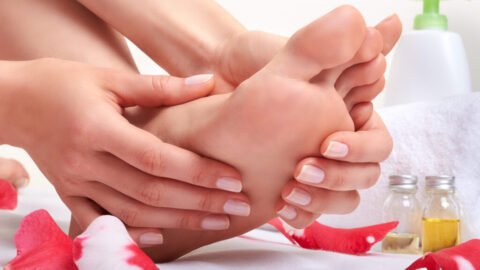Nurses Feet and Shoes: Choosing the Right Footwear for Long Shifts
Nurses are the backbone of the healthcare system, often spending long shifts on their feet, providing critical care to patients. Recognizing the strain that such extended periods of standing and walking can have on the feet, it is essential to address the topic of proper footwear for these dedicated professionals. High-quality nursing shoes are not just about comfort; they play a crucial role in supporting posture, minimizing fatigue, and reducing the risk of foot-related ailments.
Choosing the right shoes can make a significant difference in a nurse’s workday. Adequate support helps combat the development of conditions such as plantar fasciitis, which is common among those who are on their feet for extended periods. Given the variety of options available, it’s important for nurses to be well-informed about the features of high-quality shoes and what makes them suitable for the healthcare environment.
As the demand for more specialized and supportive footwear increases, manufacturers are responding with shoes designed specifically for nurses, offering a range of styles from traditional clogs to modern athletic-inspired models. Footwear in the nursing profession is not a mere accessory but an integral part of a nurse’s uniform, requiring careful consideration to ensure both comfort and functionality are met.
Importance of Proper Footwear for Nurses
Nurses spend long hours on their feet, which makes the selection of proper footwear essential to their health and comfort. The right nursing shoes provide several vital benefits, including support, stability, and protection against the rigorous demands of the healthcare environment.
- Support: Properly designed nursing shoes offer essential arch and heel support, which helps in the prevention of foot pain and fatigue. This support is critical for nurses who are required to stand or walk for most of their shifts.
- Stability: A good pair of nursing shoes should feature non-slip soles. This helps prevent falls and other injuries in the fast-paced, often slippery hospital setting.
- Comfort: Adequate cushioning in shoes can ease the stress on a nurse’s feet throughout the day. Comfortable shoes can help to mitigate the development of blisters and calluses.
In addition, the selection of the right shoe can play a role in averting more serious conditions such as plantar fasciitis, which is often caused by inadequate foot support.
| Consideration | Description |
|---|---|
| Material | Breathable materials keep feet dry and reduce odors. |
| Fit | Shoes should fit snugly without constricting the foot. |
| Style | Low-heeled and closed-toe designs safeguard against workplace hazards. |
Proper nursing footwear also contributes to overall posture, which can alleviate back, knee, and foot pain, attesting to the importance of proper foot care. Choosing the right shoes is a simple yet critical step for any nurse in maintaining personal health and workplace safety.
Anatomy of Nursing Shoes
Choosing the right nursing shoes is critical for professionals who spend long hours on their feet. The design of these shoes focuses on reducing foot strain and enhancing comfort during long shifts.
Supportive Features
Nursing shoes often come with enhanced arch support and thick cushioning to alleviate pressure on the foot. Design elements like contoured footbeds provide a stable base for the foot, crucial for maintaining proper posture and minimizing fatigue.
Slip-Resistant Soles
One key safety feature is a shoe’s slip-resistant sole. Hospitals can have slick surfaces, and nursing shoes with non-slip treads help prevent workplace accidents, providing a strong grip on various clinical settings.
Breathable Materials
Nursing shoes should be made of breathable materials like leather or advanced synthetic fabrics that allow air circulation to keep feet dry. This helps reduce the risk of fungal infections and promotes all-day comfort.
Common Foot Problems in Nursing
Nurses often experience foot problems due to long hours spent on their feet. This section delineates some of the conditions frequently encountered in the nursing profession.
Plantar Fasciitis
Plantar fasciitis is characterized by a sharp, stabbing pain in the bottom of the foot, typically felt upon taking the first steps in the morning or after a period of rest. As podiatrist Julia Overstreet points out, it is an inflammation of the tissue connecting the heel bone to the toes.
Arch Pain
Arch pain, or strain, can result from prolonged periods of standing. It stems from stress and overuse, which may lead to inflammation. The discomfort varies, ranging from a dull ache to an acute, shooting sensation.
Heel Spurs
Heel spurs are bony growths on the heel bone, often associated with plantar fasciitis. They develop over many months and can cause pain and tenderness on the underside of the heel, especially when walking.
Shoe Selection Criteria

Selecting the right shoes is critical for nurses, as they often spend long hours on their feet. The criteria for choosing nursing shoes include fit and sizing, comfort and cushioning, and durability—all essential for maintaining foot health and comfort during shifts.
Fit and Sizing
Shoes for nurses should have a fit that’s snug but not tight, providing enough space for the toes to move. It’s advised to recognize foot ailments caused by ill-fitting shoes and to seek proper guidance for shoe fitting. A professional fitting can ensure the shoe accommodates the natural shape of the foot.
- Toe Box: Roomy enough to prevent cramping.
- Heel: Fits snugly without slipping.
- Width: Accommodates foot comfortably without pinching or excessive space.
Comfort and Cushioning
Cushioning absorbs the impact of steps, which is key for a profession that involves extensive walking and standing. The shoe’s insole should provide adequate arch support and have a comfortable footbed. Nurses might consider shoes that are specifically recommended by foot doctors for the right blend of shock absorption and support.
- Arch Support: Must match the wearer’s foot arch type.
- Midsole: Quality cushioning materials like EVA or polyurethane.
- Footbed: Preferably contoured and with moisture-wicking properties.
Durability
A nurse’s shoe must withstand the demands of the healthcare environment. Durability ensures that the shoe maintains its shape, support, and comfort over time. Durable materials and construction, such as reinforced stitching or high-quality leather uppers, are characteristics of a long-lasting shoe. Features like slip-resistance are also critical for safety, and shoes should be selected with robust outsole materials to extend the shoe’s life.
Foot Care Practices for Nurses
Nurses spend long hours on their feet, which makes proper foot care practices essential for their health and comfort. Implementing a routine of foot examinations, maintaining hygiene, and choosing the right socks are pivotal to prevent pain and foot related complications.
Regular Foot Examinations
Nurses should conduct self-examinations of their feet regularly to check for any sign of pressure sores, blisters, or other abnormalities. Early detection of foot issues is crucial and can lead to prompt treatment, potentially heading off more serious complications. For issues that persist, it may be necessary to consult with a healthcare professional specializing in foot care.
Proper Hygiene
Maintaining good foot hygiene is a fundamental aspect of foot care for nurses. Feet should be washed daily with soap and water, and thoroughly dried, especially between the toes to prevent fungal infections. Proper hygiene also includes keeping toenails trimmed straight across and smooth to avoid ingrown toenails.
Appropriate Socks
Wearing quality socks is as important as selecting supportive shoes. Nurses are advised to select compression socks which offer increased circulation, reduce swelling, and provide arch support. Socks should ideally be made of fabrics that wick moisture away from the skin to keep the feet dry throughout long shifts.
Impact of Shift Length on Foot Health
Extended shift lengths for nurses pose a significant risk to foot health, as prolonged standing can lead to a variety of conditions adversely affecting the feet and lower extremities. The relationship between shift lengths and foot discomfort is evident, with nurses often experiencing increased foot pain correlating with the duration of their shifts.
- Shorter Shifts: May lead to less reported foot pain and fewer chronic issues.
- Longer Shifts: Associated with a higher incidence of foot disorders such as plantar fasciitis, bunions, and corns and calluses.
A study reflecting on nurses’ perceptions of their foot health found that foot pain could range between 20.5%-50%, depending on shift length and work conditions. Nurses with shifts over 8 hours often report a higher intensity of foot pain and more frequent complaints.
The most prevalent foot problems among nurses include:
- Corns and Calluses (28.7%)
- Lesser Digital Deformities
- Foot Pain
- Low Foot Arch
- High Foot Arch
Footwear is an essential variable influencing nurses’ foot health in relation to shift length. Shoes with adequate support and cushioning can mitigate the impact of long hours spent on one’s feet.
Given the potential impact of footwear on occupational task performance, it is clear that both the length of nursing shifts and the quality of footwear are pivotal in maintaining nurses’ foot health. Nursing staff are encouraged to consider both the fit and function of their shoes, especially tailored towards the demands of prolonged standing inherent in the profession.
Ergonomic Considerations in Nursing Footwear

Nurses spend long hours on their feet, which necessitates the need for footwear that supports their health and comfort. Ergonomic considerations in choosing the right nursing shoes include a focus on support, fit, and materials.
- Support: Shoes should provide adequate arch support and cushioning to prevent foot strain and fatigue. Proper support helps in maintaining posture and reducing the risk of injury.
- Fit: It’s critical that nursing shoes fit well to provide stability and reduce incidents of trips and falls. A good fit also helps to avoid foot problems like corns, calluses, and blisters. Shoes should have a snug fit at the heel and enough room in the toes to move freely.
- Materials: Breathable materials like leather or high-quality synthetic fabrics help manage moisture and maintain foot hygiene. The outsoles should be made of non-slip material to ensure safety on different surfaces.
The following table summarizes key features to look for in nursing shoes:
| Feature | Importance |
|---|---|
| Arch Support | Prevents plantar fasciitis and other arch-related issues. |
| Cushioning | Reduces impact on joints during long standing hours. |
| Non-slip Outsoles | Increases safety on wet and slippery hospital floors. |
| Breathable Materials | Helps to keep feet dry and comfortable. |
Nurses should consider footwear as a vital component of their work attire, investing in quality shoes that provide both comfort and protection. The Professional footwear evaluation for clinical nurses study emphasizes the importance of shoe support during nursing activities. Nurses’ perceptions of their foot health also play a significant role in their job satisfaction and overall well-being. Thus, the ergonomics of nursing footwear should never be overlooked.
Reviews of Popular Nursing Shoe Brands
Clove Nursing Shoes: Praised for support, Clove has gained traction among nurses for its professional appearance combined with ease of cleaning. Prices start at $139 on Goclove.com.
Ryka Women’s Devotion Plus 4 Walking Shoe: Notable for being lightweight, Ryka’s walking shoes offer comfort without the bulk. They are available on Amazon with varying prices.
On Cloud 5: Renowned for comfort, the On Cloud 5 is often highlighted as a go-to for those long shifts on the hospital floor. Pricing begins at $134 on Amazon.
Brooks Ghost 14 Women’s Neutral Running Shoe: Brooks stands out for overall comfort among nurses, especially those requiring a neutral running shoe for busy workdays. Priced at $173 on Amazon.
BALA Shoes: Designed specifically for nurses, BALA shoes combine form and function for long-lasting comfort during extensive wear.
Hoka One One: A brand that imparts a cushioned ride, aiding those who battle foot fatigue. Nurses recommend them for their comfortable built and supportive structure.
Alegria Shoes: Alegria caters to fashion and comfort, offering a range of slip-resistant professional shoes that are both sturdy and stylish for nursing staff.
These brands are among the top choices recommended and tested by nurses, ensuring that they meet the rigorous demands of the profession. Each brand offers its unique benefits, from specialized support to fashionable designs.
Custom Orthotics and Inserts
Nurses often spend long hours on their feet, making proper foot support crucial to their comfort and health. Custom orthotics are specialized, personalized shoe inserts designed to cater to the individual’s foot structure, improving alignment and reducing stress on the feet.
Benefits of Custom Orthotics:
- Tailored Fit: They are crafted to fit the unique contours of one’s feet, providing a higher level of support than off-the-shelf options.
- Enhanced Comfort: They can help distribute pressure more evenly across the feet, reducing discomfort during long shifts.
- Improved Posture: By correcting foot alignment, they can contribute to better overall posture and gait.
Types of Orthotics:
- Functional Orthotics: These are designed to control abnormal motion and often made from semi-rigid materials such as plastic or graphite.
- Accommodative Orthotics: Softer and meant to provide additional cushioning and support.
While custom orthotics are typically more expensive, some may find them to be a worthwhile investment. It’s important for nurses to consult with a healthcare professional, such as a podiatrist, to determine the most appropriate type for their needs.
Considerations for Inserts:
- Durability: Quality materials can ensure the inserts last through demanding wear.
- Heel Support: Inserts like those with a deep heel cup can stabilize the foot.
- Volume: Inserts should not take up excessive space within the shoe, maintaining a comfortable fit.
In summary, while custom orthotics and inserts come with an initial cost, their long-term benefits to foot health and comfort may outweigh this expenditure for nurses who are on their feet all day.
Regulations and Standards for Nursing Shoes
Certain regulations guide the selection of nursing footwear to ensure safety and comfort in various healthcare settings. The Occupational Safety and Health Administration (OSHA) mandates that employers must conduct a hazard evaluation to determine if specific footwear is required to protect employees’ feet. If casual footwear fails to provide necessary protection, healthcare institutions often implement policies prohibiting such shoes.
Characteristics of Proper Nursing Shoes
- Comfort: Essential to prevent foot fatigue during long shifts.
- Support: Adequate arch support mitigates the impact on the feet.
- Slip-resistant: To avoid slips and falls on different surfaces.
Desirable Features:
- Protective Design: Shields feet from spills and dropped objects.
- Ease of Cleaning: Smooth surfaces that can be easily disinfected.
Healthcare providers are advised to choose shoes that cater specifically to their work environment and personal foot health needs. For instance, clogs are a popular choice among nurses due to their convenience and features that provide comfort and support.
Manufacturers of nursing shoes also recommend taking foot measurements at the end of a workday when feet are most swollen to ensure a proper fit. Additionally, certain styles like Alegria Shoes and On Cloud Shoes have been heralded for their ergonomic designs that cater to the rigorous demands of nursing. Nurses must make informed decisions, often based on guidelines set forth by their respective healthcare organizations and personal ergonomic needs.
Advances in Nursing Footwear Technology

Recent years have seen significant developments in nursing shoes, aimed at enhancing comfort, support, and safety for healthcare professionals. One major innovation is the integration of memory foam technology, which conforms to the shape of the foot, providing tailored cushioning for extended periods of standing and walking.
- Clove Shoes: Specially designed for healthcare providers, featuring fluid-resistant materials and easy-to-clean surfaces.
- BALA Shoes: Equipped with a supportive insole and an anti-slip outsole to ensure stability on various hospital surfaces. BALA Footwear also emphasizes fluid resistance.
Footwear companies have introduced air-cooling technology to help maintain temperature regulation within the shoe, aiming to reduce heat buildup during long shifts. Additionally, advancements in shock absorption capabilities alleviate the impact on feet, joints, and the back.
Manufacturers such as Asics and Brooks have focused on biomechanics, developing shoes that support proper posture and foot flexion to protect against conditions like plantar fasciitis. They have also been tested and recommended for their ergonomic benefits.
Finally, the aspect of style has not been overlooked, with companies like Skechers offering a range of aesthetically pleasing options that do not compromise on comfort or functionality, making the selection of appropriate footwear a more appealing task for nurses.









[…] with an entrepreneurial spirit can leverage their expertise in healthcare to create innovative medical products or excel in pharmaceutical sales. Both paths require a deep understanding of patient needs and […]
[…] nursing shoes is a crucial component of the daily uniform. These shoes not only provide comfort during long shifts, but also support and protect the feet from the hazards of a clinical environment. […]
[…] it’s essential to strike a balance between utility and personal touch. Items such as comfortable footwear, high-quality scrubs, or even customized accessories can make their demanding shifts a little […]
[…] the delivery room, labor and delivery nurse practitioners play a crucial role in ensuring the safety of […]